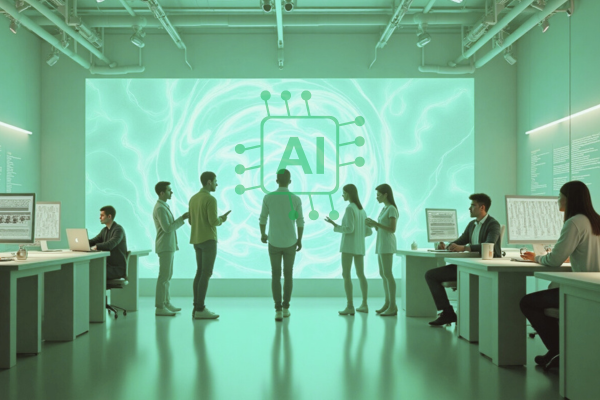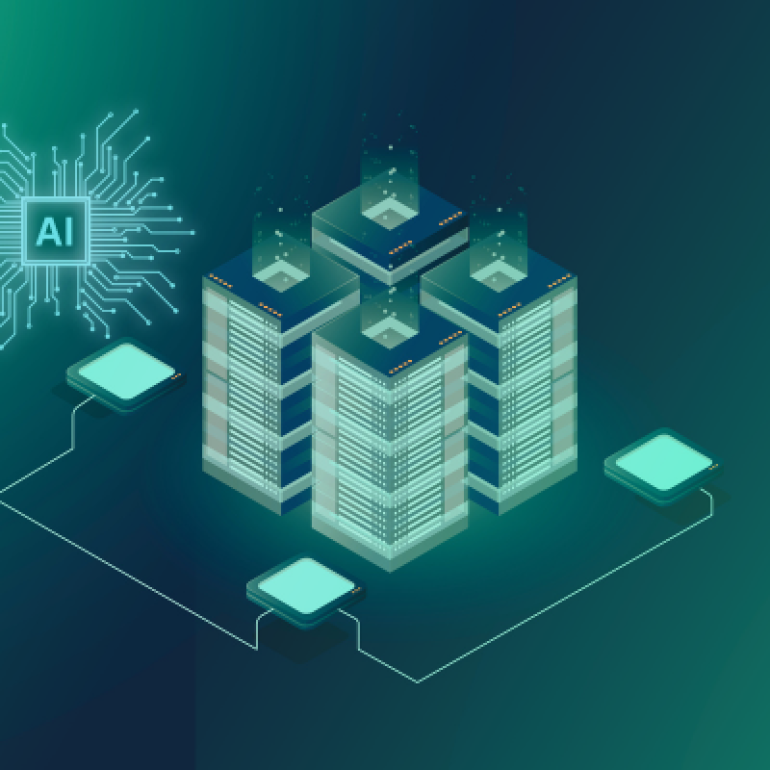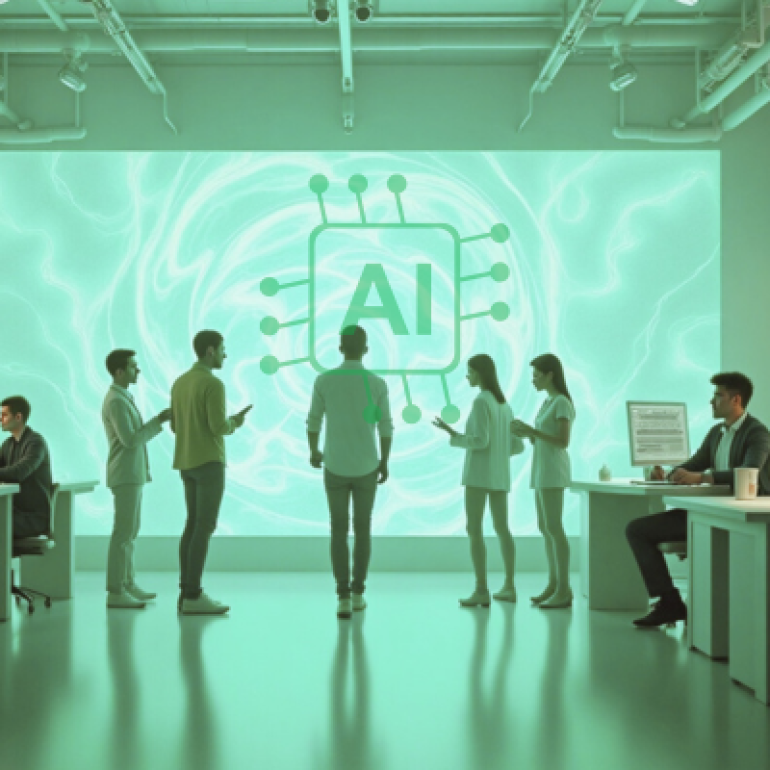- 15 July 2025
- Dr. Chandra Bondugula
How Generative AI Strategy Drives Innovation, Success and Growth
Generative AI, a transformative subset of artificial intelligence, refers to systems capable of creating new content, whether text, images, videos or even music. Powered by advanced technologies like GPT models (Generative Pre-trained Transformers) and diffusion systems, generative AI is no longer a futuristic concept.

What Is Generative AI and Why Is It a Game-Changer?
Generative AI, a transformative subset of artificial intelligence, refers to systems capable of creating new content, whether text, images, videos or even music. Powered by advanced technologies like GPT models (Generative Pre-trained Transformers) and diffusion systems, generative AI is no longer a futuristic concept. It is the world we are currently living in. It’s reshaping all types of industries and driving tangible business outcomes.
Why does it Matter?
1. Accelerating Innovation:
Generative AI enables businesses to explore creative solutions faster.
2. Enhancing Productivity:
Automating content generation saves time and resources.
3. Personalization at Scale:
AI empowers hyper-personalized customer experiences.
Key Statistics: The generative AI market is predicted to grow at a CAGR of 35.6%, reaching $110.8 billion by 2030 (Source).
How Does Generative AI Drive Innovation?
1. Revolutionizing Product Design
Generative AI is a powerful tool for optimizing product design. Analyzing massive datasets allows AI systems to generate multiple design iterations, balancing factors like material usage, cost efficiency, and aesthetics.
Example: Companies like Autodesk use generative AI to design lightweight yet durable products, reducing production costs and enhancing functionality.
47% of manufacturing companies that adopt AI report a significant improvement in product innovation.
2. Advancing Research and Development
In fields like pharmaceuticals, generative AI accelerates R&D cycles. AI systems predict molecular structures, simulate chemical reactions, and even identify potential drugs.
Real-World Impact: AI reduced the time to develop a COVID-19 vaccine by identifying spike protein structures in record time.
3. Enhancing Creative Processes
Generative AI tools, such as DALL-E and ChatGPT, are helping artists, writers, and designers push creative boundaries. From drafting compelling narratives to creating artwork, the possibilities are endless.
63% of creative professionals using generative AI report higher productivity and better-quality outputs.
What Role Does Generative AI Play in Business Success?
How Does Generative AI Enhance Operations?
Generative AI automates repetitive tasks, allowing teams to focus on strategic objectives. It’s used for:
1. Drafting Reports: AI tools generate accurate and visually appealing reports.
2. Customer Support: AI chatbots resolve queries 24/7 with human-like interactions.
3. Code Generation: Tools like GitHub Copilot assist developers, speeding up software delivery.
Businesses report a 40% increase in operational efficiency after adopting AI-driven automation.
Can Generative AI Improve Decision-Making?
Absolutely. By analyzing historical data and generating predictive insights, AI assists leaders in making data-backed decisions. For example, AI tools forecast market trends, helping businesses allocate resources effectively.
Does Generative AI Reduce Costs?
Yes, and significantly. By automating creative processes, companies save on labor costs while maintaining high-quality outputs. Generative AI also minimizes material wastage during manufacturing..
How Does Generative AI Drive Business Growth?
What Makes Generative AI a Growth Catalyst?
Generative AI not only enhances existing processes but also creates new revenue streams. Here’s how:
- Global Reach Through Multilingual Content AI tools enable businesses to produce localized content in multiple languages, tapping into international markets..
- Faster Prototyping Generative AI accelerates prototyping, especially in sectors like automotive and architecture. Faster prototyping means faster time-to-market.
Stat: Companies using generative AI for prototyping reduced product launch cycles by 50%. - Personalized Customer Experiences Generative AI-driven chatbots and recommendation systems improve customer satisfaction and loyalty by delivering tailored solutions.
Example: Retailers report a 25% boost in repeat purchases through AI-powered personalization. - New Content Monetization Opportunities Generative AI enables creators to monetize AI-generated music, art, and written content, opening new income streams in digital marketplaces.
What Are the Challenges of Adopting Generative AI?
Data Privacy Concerns
Generative AI relies on massive datasets, raising privacy issues. Companies must ensure compliance with regulations like GDPR and CCPA.
Ethical Challenges
AI models can inadvertently replicate biases present in training data. Ethical AI frameworks are essential for mitigating such risks.
Integration Complexity
Implementing generative AI requires robust infrastructure and skilled personnel, which can be challenging for smaller businesses.
High Initial Investment
While generative AI yields significant long-term benefits, the upfront costs for technology acquisition and training can be a barrier for some companies.
What Does the Future Hold for Generative AI?
1. Democratization of AI Tools
With the rise of low-code/no-code platforms, generative AI will become accessible even to non-technical users, empowering smaller businesses to compete with larger enterprises.
2. Advancements in AI Technology
AI models will become more efficient and capable of multitasking, making them applicable across various industries.
3. AI in Entertainment and Media
From AI-generated movies to immersive VR experiences, generative AI will redefine creative storytelling.
Stat: The entertainment industry’s AI-driven revenue is expected to reach $25 billion by 2028.
4. Integration with Emerging Technologies
Generative AI will increasingly work alongside other technologies, such as blockchain and IoT, to create synergistic solutions for complex challenges.
Conclusion
Generative AI is reshaping how businesses innovate, succeed, and grow. By adopting a well-crafted generative AI strategy, companies can unlock unprecedented opportunities, streamline operations, and deliver unmatched value to customers. As this technology continues to evolve, it’s clear that generative AI will be the driving force behind the next wave of business transformation.




